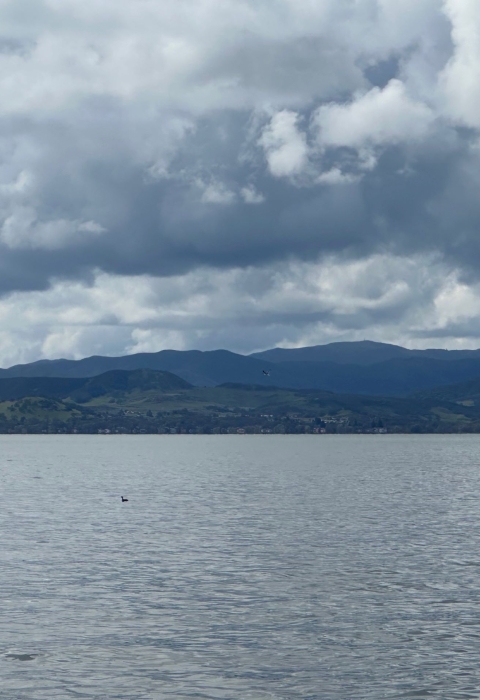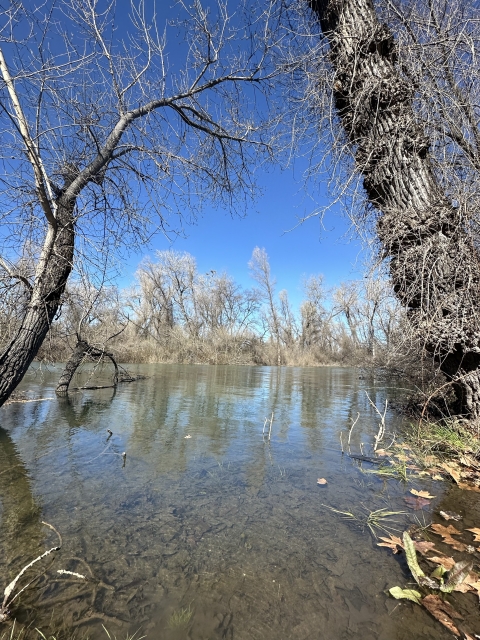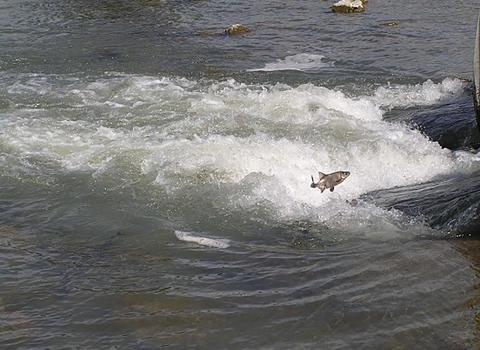“This year looks a lot different than last year,” said Jerrod Sellers, a wildlife biologist with the U.S. Fish and Wildlife Service’s Sacramento Fish and Wildlife Office. “We haven’t seen nearly as many adult hitch running up to spawn in the tributaries.”
Last year, thousands of adult Clear Lake hitch were seen swimming up the creeks and streams from Clear Lake to spawn. The number was so large that locals and biologists were regularly rescuing stranded adult and juvenile hitch from agricultural and stormwater drainage ditches along the creeks. The numbers left biologists bewildered and ecstatic. They hadn’t seen numbers like that in the past five years.
This year is different. Biologists monitoring the creeks daily have reported seeing fewer adults swimming upstream and only a few dozen spawning. They have also reported seeing juveniles at the mouths of the creeks.
What happened to all the fish that were seen in 2023?
“Weather is a key factor in triggering spawning activity,” said Sellers.
The hitch run upstream to spawn starting in mid-March through late April. They wait in the lake until the water in the streams reaches about 60 degrees Fahrenheit. But this year, two cold weather fronts swept into the region right when the fish were lining up at the edge of the lake to make their journey upstream. The temperatures dropped, the water got cold, and the fish retreated into the lake, waiting for warmer conditions. Just as conditions warmed again, another cold front blasted the region. By then, it was too late for the fish to make their spawning journey.
However, the presence of juvenile hitch in the streams is a good sign.
“Seeing young fish in the tributaries means they survived their first or second year in the lake and are still following their natural instincts to swim upstream even though they’re not quite mature enough to spawn,” said Sellers.
Clear Lake hitch usually mature at 2 to 3 years of age and can live for up to 6 years. The first few years of life are the hardest for the fish. Hitch eggs are a favorite food of large catfish that suction the bottom of the lake and streams where the eggs rest. As small hitch, they become a delicacy to striped bass and bullfrogs. For a few years, very few juvenile fish were seen in the lake, leaving biologists to wonder if a younger generation of fish was present or if they had all been gobbled up. Recent sightings help put that questioning to rest.
The U.S. Fish and Wildlife Service is working closely with biologists and representatives from the local Tribes, U.S. Geological Survey and California Department of Fish and Wildlife to build an understanding of this species and its status in the lake today. That body of knowledge is founded on the Tribes’ historical accounts of the area and the prevalence of the fish. The Tribes and biologists work together to build additional data, including population surveys, habitat reports and studies that provide information on fish age and where it traveled.
“Along with understanding the population numbers and the lifecycle of the fish, we need to restore the habitat in the area,” said Sellers.
Clear Lake has lost more than 85 percent of the wetlands that once lined the shores, and tributaries have become clogged with Himalayan blackberry vines and dirt from eroding streambanks. This shift in habitat poses a threat to the hitch that evolved to rely on wetlands for raising juveniles and floodplains for spawning.
In late April, the Service announced a $2.5 million grant that will restore habitat and improve fish passage fish passage
Fish passage is the ability of fish or other aquatic species to move freely throughout their life to find food, reproduce, and complete their natural migration cycles. Millions of barriers to fish passage across the country are fragmenting habitat and leading to species declines. The U.S. Fish and Wildlife Service's National Fish Passage Program is working to reconnect watersheds to benefit both wildlife and people.
Learn more about fish passage between Blue Lakes and Scotts Creek. The Tejeda Ranch Habitat Management Project will clear debris dams and plugged culverts in the area. About 60 percent of the adult hitch travel to the Scotts Creek watershed for spawning, making this area a key priority for habitat restoration. In addition to supporting the Clear Lake hitch, the project will also benefit Clear Lake tule perch, foothill yellow-legged frog, California red-legged frog and Sacramento sucker. Many partners came together to support this project, including the Robinson Rancheria of the Pomo Indians of California, the Yurok Tribe's Design and Construction, California Department of Water Resources, Tribal Eco-Restoration Alliance, California Department of Fish and Wildlife, Caltrans, and Lake County Watershed Protection District.
“We’ll start planning efforts for this project in the fall with the goal of breaking ground in 2025. This project will undoubtedly be positive for the Clear Lake hitch. We’re grateful for all our partners coming together on this effort,” said Sellers.








